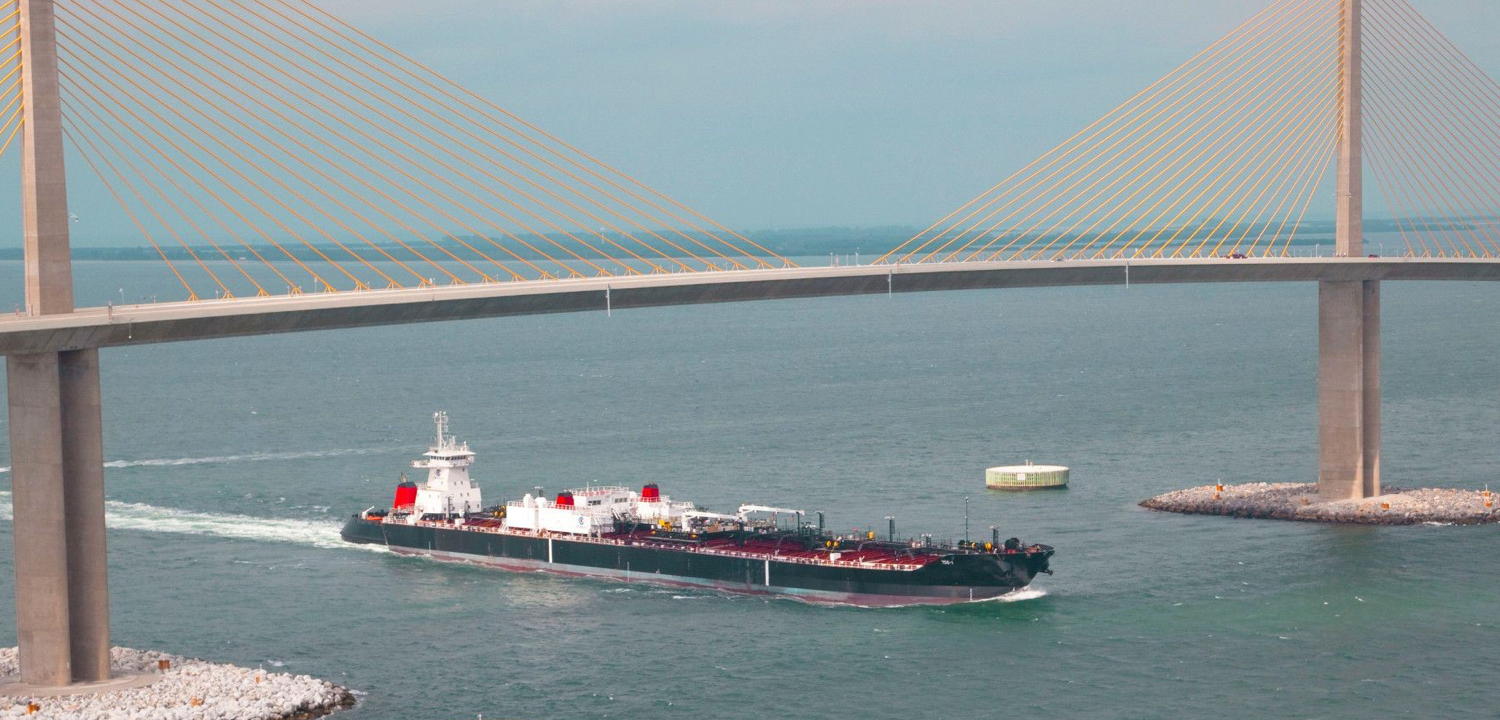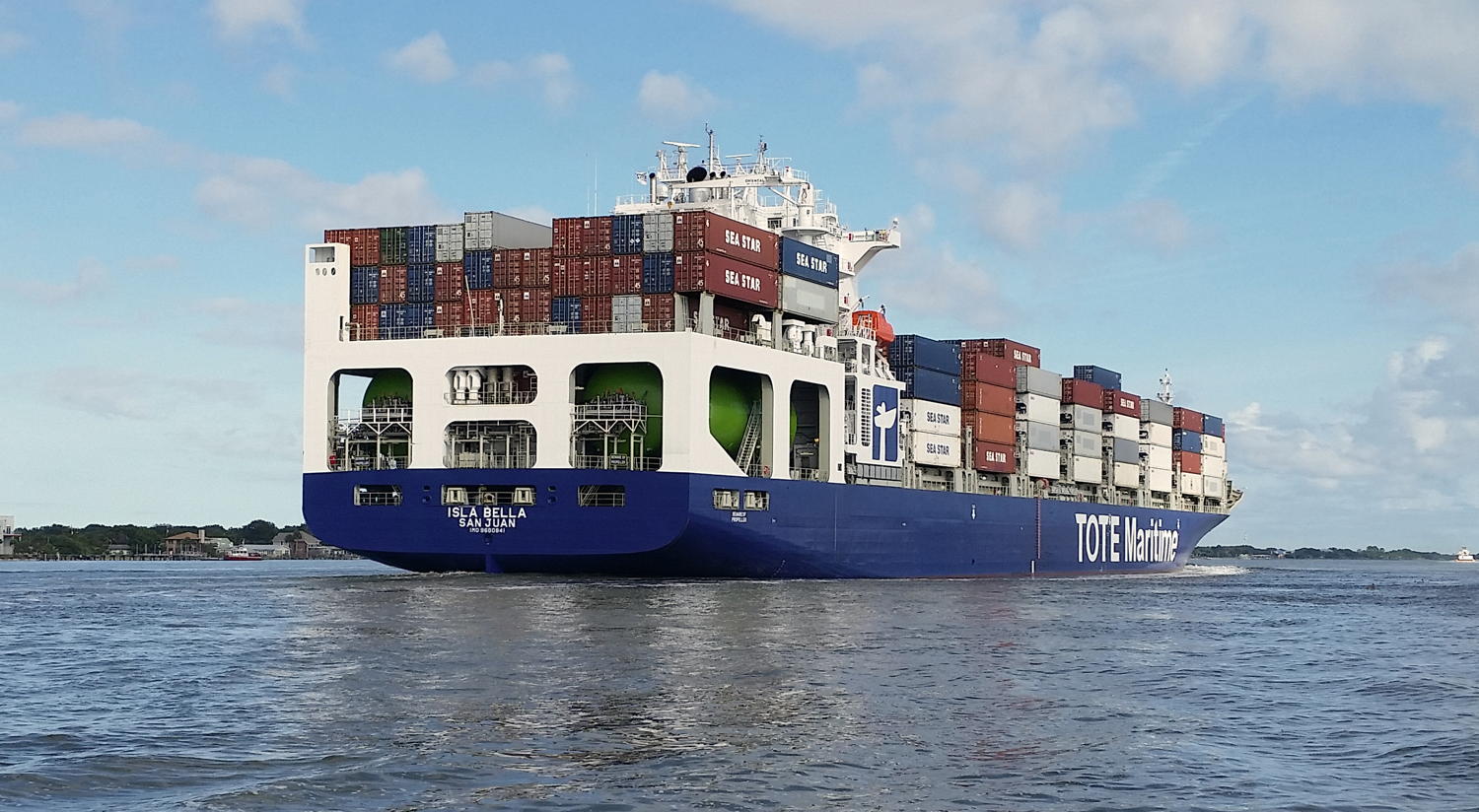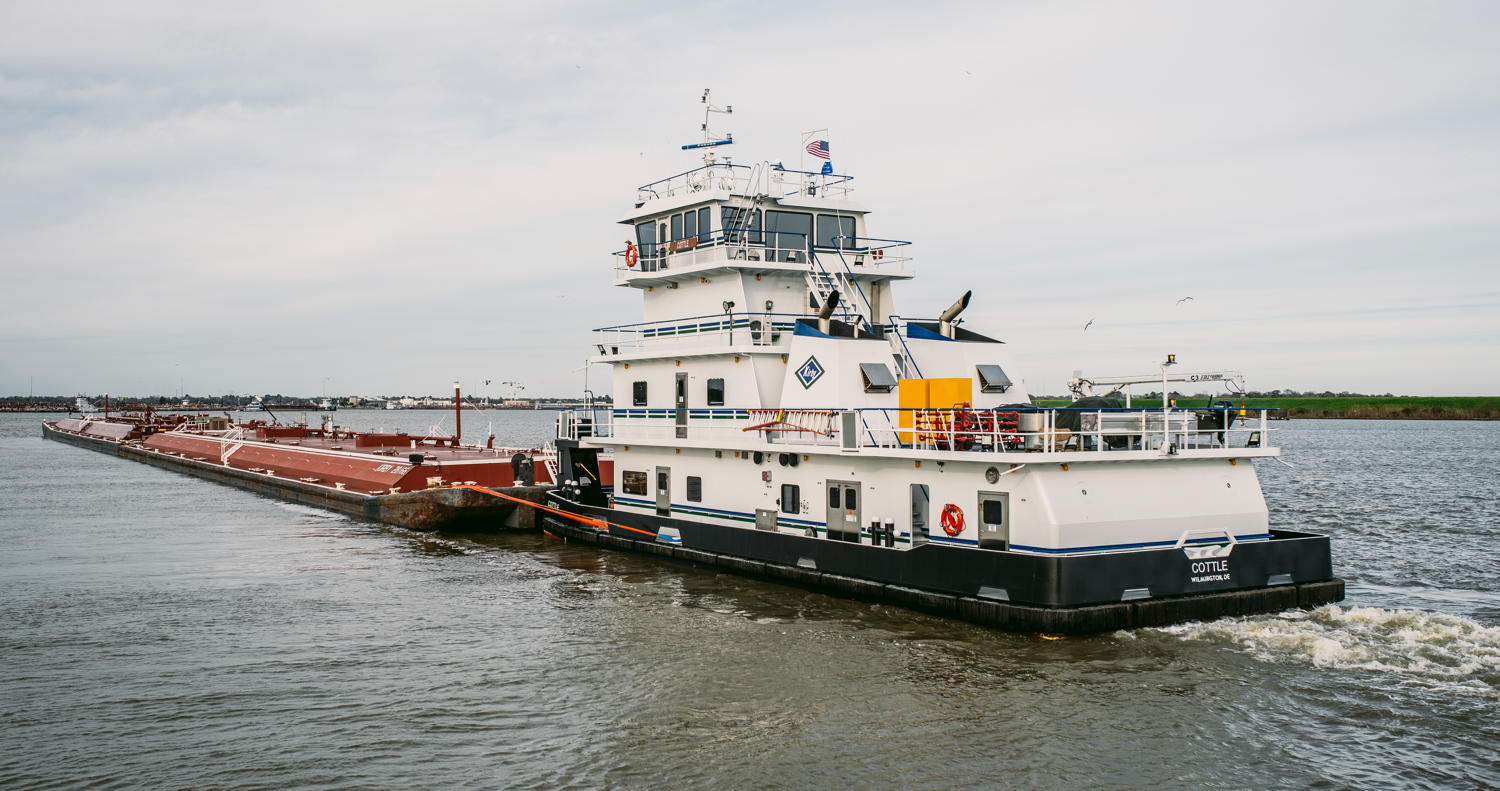»Domestic« and coastal shipping play a major role for the US maritime industry. Barry Parker gives an overview of current market developments, players and trends
Maritime trade serving the United States is vast, whether measured by tonnage or by USD value. While HANSA readers may[ds_preview] certainly be aware of the vast volumes of cargo in US foreign trade, the domestic sectors, inland – rivers and intracoastal waterways – and coastwise – mainly tug barge combinations, but also full size vessels – are vital parts of the US maritime scene. The »Jones Act«, a well known but not always well understood set of »cabotage« laws, reserves internal trades (inland, coastwise, and also ocean-going, in the case of Hawaii, Alaska and Puerto Rico) for vessels built domestically, crewed by US mariners, and majority owned by US »citizens«. However, non-US built ships, flagged in the States and crewed by US mariners can still participate in US foreign trades.
The inland marine marketplace, served principally by tugs and barges hauling bulk raw materials, refers to the Mississippi River, but also other waterways including the Ohio River and the Gulf Intracoastal Waterway. Consultant Ken Eriksen, Senior Vice President at IEG Vantage Agribusiness Intelligence, recently provided an overview of the marketplace at an event organized by the Waterways Council.
Growth in barge business
Eriksen noted that the total barge fleet totaled just shy of 23,000 units – a level not seen since the late 1990s, with the real growth coming in the covered barge sector, most suitable for grain cargoes – reaching an all time high of 13,000 units in late 2018. Dry open barges, suitable for scrap metal and for the beleaguered coal business, saw a decline in the fleet, while tank barges, handling nearly 200mill. t of crude oil, refined products and chemicals, grew marginally to just under 4,000 units. The dry open market suffered weakness because of a precipitous drop in coal shipments; tonnage was down 33% from peak levels of 300mill.t in the early 2000s, with a proportionate drop in tonne miles and disappointing capacity utilization.
The Trade War, and Mother Nature, have both taken their toll on the inland sector. In early February, 2020 private equity owned American Commercial Lines, a major sector participant with an estimated 3,500 barge fleet, entered into a pre-arranged bankruptcy proceeding, where debt (said to be more than 1bn. $) is restructured.
The grain and coal trades have both softened, due to Trade War and environmental factors, respectively. Overall river business had been disrupted by heavy rains and subsequent flooding, in 2018 and 2019.
A challenge identified by Eriksen is the relatively low price for scrap metal, a non incentive for removal of assets from the fleet. The sector is not immune to »consolidation« seen throughout shipping sectors. In late January, Kirby Corporation, the leader in the inland tank barge sector with barges, announced the acquisition of 90 inland tank barges with approximately 2.5mill. bbl of capacity and 46 inland towboats, through a take-over of Savage Inland Marine. Kirby provides 1,065 inland tank barges with 23.7 mill. bbl capacity and 304 inland towboats.
The price of the acquisition was pegged at 278mill. $ of cash, plus assumption of leases. In spite of such vicissitudes, the sector still sees a great deal of activity.
Coastwise trade, along the Pacific, in the Gulf of Mexico and the East Coast is a major market for US »Jones Act qualified« equipment. The principal cargoes are crude oil (Alaska to West coast refineries, and Texas/ Louisiana to refineries in the mid-Atlantic and Northeast) and coastwise shipments of refined products. The largest vessel are in tanker fleets ; for example, Conoco Phillips subsidiary Polar Tankers with vessels of 141,000 dwt in Pacific runs, and Crowley’s operation of two 115,000 dwt tankers originally built for oil major ExxonMobil (at a cost of around 200mill. $ each), also on Pacific runs from Alaska to refineries in the Pacific Northwest and in California. Articulated tug barges (ATBs), where the barges (some in excess of 300,000 barrels cargo capacity) are mated to the tug in a bespoke coupler, can be pushed, and traditional coastwise barge trades, are active around the coasts. Major product trades include Texas and Louisiana refineries into Florida, and, then further up the US East Coast.
High prices in US yards
There is a US liner cargo component as well; Jones Act equipment links Pacific coast ports to Alaska, Hawaii, while Puerto Rico (and the US Virgin Islands) are served from Atlantic coast ports. Well known names like Crowley, active in the Puerto Rico trade, and TOTE (serving Puerto Rico but also Alaska), Matson (serving Hawaii, Alaska and farther afield to Guam and to China), Pasha (serving Hawaii) participate in these trades.
Conservative »think tanks« routinely take aim at the Jones Act, alleging deleterious impacts on the economies of Puerto Rico and Hawaii; the carriers have trumpeted their leadership in welfare programs, for example hauling supplies to Puerto Rico after various natural disasters.
The cost of building in US yards is high; two 3,600TEU vessels built for Matson at the Philly Shipyard cost just under 420mill. $. Two larger vessels also built for Matson, with the capacity for 3,500TEU plus 500 vehicles with room for breakbulk cargo, under construction at NASSCO in San Diego, are costing around 500mill. $ total. The first of the pair was delivered to Matson in December, 2019, with delivery of the second vessel set for Q2 2020. The new vessels, with dual fuel engines, are designed to run on low sulfur fuels with the potential for a later switch over to LNG as it becomes more widely available in Pacific ports served by the carrier.
Hapag-Lloyd is involved too
Also noteworthy is the 60 vessel Maritime Security Program (MSP), where US flagged (but not built in the States) tonnage, mostly container and ro-ro ships, are engaged in trades linked with US government shipments, in trades between the US and Europe, Asia, Africa and South America.
These may include cargo tied to export credit assistance and to »Buy America« provisions in sales contracts. Participants in this program, designed to employ US seafarers, and keep »surge« capacity available for military operations, include shipowners Maersk with 20 vessels, Liberty Global Logistics, APL and Hapag-Lloyd. Participation is incentivized by annual »stipends« (subsidies) to the participating companies. In addition to this there are a number of programs, also administered by the US Maritime Administration (MARAD) alongside the MSP, where US flagged vessels can handle military cargo and agricultural food aid.
Though the US maritime presence has waned internationally, its domestic maritime business – less known, perhaps, is alive and well.
Barry Parker



















